When we talk about building businesses, we often talk about how data is a compass, guiding organizations toward more informed and strategic decision-making, which is obviously important for growth. CRM data is a huge part of the current and ongoing data revolution, providing a whole host of insights that businesses can leverage to refine their strategies, enhance customer experiences, and ultimately drive that much-needed growth.
Businesses like yours can unlock all sorts of opportunities by understanding and utilizing the data generated through CRM systems, leading to more effective decision-making. Let’s move on and talk about a few of the ways you can use said data.

First off, CRMs are a huge part of transforming sales strategies, bringing data-driven precision to a process that was once more guesswork than anything else. These platforms offer a centralized repository of information where every interaction with a customer or potential lead is recorded and sorted for you to find easily.
By analyzing this data, your sales team can identify patterns, understand customer preferences, and predict future behaviors based on previous actions and responses. For instance, insights gained from CRM data can let the team know which products or product features are working for your customers, allowing sales teams to tailor future pitches accordingly.
Sales forecasting in and of itself also becomes more accurate when grounded in the historical data and trends embedded within CRM analytics. This lets businesses allocate resources more efficiently and set realistic sales targets.

Beyond boosting sales, CRMs also play a key role in improving customer retention. Retaining existing customers is, generally, far more cost-effective than acquiring new ones, so customer retention strategies are a big part of any business’s success.
CRM data provides a detailed view of customer interactions, purchase history, and preferences, enabling businesses to personalize engagement and strengthen sales and retention relationships. By segmenting customers based on their behavior and preferences, a business can develop far more targeted communication strategies that actually resonate with their clients on a far more personal level. This targeted approach fosters loyalty and encourages repeat business, creating a mutually beneficial relationship between customer and company.
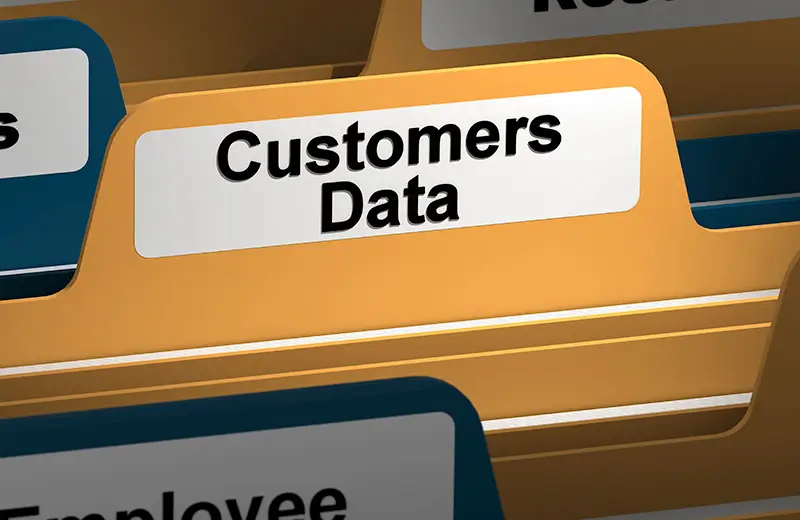
Another benefit is how integrating CRM data into the decision-making process can elevate a company’s competitive edge. Businesses that effectively harness their CRM data are better positioned to understand real-time market trends, anticipate customer needs, and more quickly adapt to changes.
By having access to real-time data, decision-makers can quickly assess the impact of their strategies and make timely adjustments, rather than waiting weeks or even months to see results. This agility is invaluable when we are talking about a market where consumer expectations and competitive dynamics are constantly shifting and changing.

Now, while the benefits of leveraging CRM data is pretty clear, many businesses might face challenges when it comes to effectively utilizing said information. Data silos, inadequate data quality and storage, irrelevant data, and lack of proper training or tools can hinder the full potential of any system and any team.
To maximize the value of CRM data, you should prioritize data cleanliness and invest in platforms that facilitate seamless data integration and analysis. Furthermore, equipping your team members with all the necessary skills to interpret and act on data insights is equally important to foster a data-driven culture within the organization.

Ultimately, CRMs serve as a fundamental tool for any business that wants to boost its decision-making processes. By tapping into the rich datasets offered by these systems, companies can refine sales strategies, bolster customer retention, and make even more informed decisions.
However, the key to this success lies in overcoming data-related challenges and encouraging a culture that values said data-driven insights. So, to stay ahead of the curve and make informed decisions, you need to make data your friend, and you can only do that by utilizing your CRM to its fullest and getting your entire team to do the same.
For extra insights on how to make the most of your CRM, check out these blogs:
Ready to make smarter, data-driven decisions? Book a free consultation today to learn how CRM data can transform your business strategies and help you achieve your goals!
Many businesses nowadays are turning to digital marketing as a way to stand out in a crowd. Those same businesses are also evaluating SEO vs. PPC to determine which strategies will yield the most effective results. They want to get the most ‘bang for their buck’, which means picking the best strategy for them.
There are two predominant approaches to marketing: Search Engine Optimization (SEO) and Pay-Per-Click (PPC) advertising. Each strategy has its own pros and cons, meaning choosing the right strategy for your business depends on individual factors, including business goals, budgets, and industry dynamics.

First, SEO is the practice of optimizing your website to increase its visibility in organic search engine results. This is done by improving website elements such as content, including blogs and on-site copy, meta tags, headers, and building backlinks that align with search engine algorithms. This method is often seen as a long-term strategy that builds credibility and trust over time, improving overall search results.
PPC, on the other hand, uses paid advertisements to appear higher in search engine result pages (SERPs). Advertisers bid on keywords, and each time their ad is clicked, they pay a fee. This form of advertising is instant and versatile, allowing businesses to reach audiences quickly and effectively. However, once you stop paying for clicks, traffic can drop dramatically, meaning it isn’t a solution that is as long-term as SEO.


Want to learn why SEO is crucial for small businesses? Check out our recent blog.

When it comes right down to it, choosing between SEO and PPC really depends on your business and what you need in both the short and long term. If you want immediate visibility and can afford ongoing advertising, PPC can be a powerful strategic tool. It is also especially helpful for new product launches or targeting specific demographics quickly.
On the other hand, if you want a more long-term online presence and have the time and energy to dedicate to growth, then SEO can be equally advantageous. It creates a foundation of organic, ongoing traffic that can build on itself without constant and active oversight.
For many businesses, the right approach might not be solely SEO or PPC but rather a hybrid approach. Balancing long-term growth with immediate impact will create a comprehensive digital marketing strategy that adapts to different goals and market conditions, benefiting the business in the long run.
Ultimately it is by aligning these strategies with your unique business objectives that is going to be what guides your path towards digital success.
We offer SEO services in collaboration with our partners at Lucent Creative, a female-led digital marketing agency. Need a hand getting your business on the (local) map? Book a free consultation.
When we talk about the must-haves of business nowadays, automating sales processes is going to rank pretty high on any list. There are countless tools and CRM systems right at your fingertips, and they can do everything from simplifying your sales journey to boosting productivity, allowing you to work smarter (not harder) than ever before.
But first, you have to understand how you can automate sales processes in a way that genuinely makes a difference.

When talking about automating your sales process, it is important to choose the right CRM. Some CRMs like Salesforce, HubSpot, and Zoho offer various features to automate different aspects of sales. So, when selecting your CRM, you need to weigh factors like ease of integration with existing sales tools, customization capabilities, and the analytics provided.
Other tools that you can include are systems such as Mailchimp for email marketing, LinkedIn Sales Navigator for prospecting, and Zapier if you want to integrate multiple applications. It might take you a bit, but the right blend of tools will help your sales team reduce their manual efforts and focus on more strategic and necessary tasks.

Now, let’s talk about automating lead management as part of automating sales processes. The first stage of any good sales funnel is capturing and nurturing leads, but that takes up quite a bit of time and effort. Automation tools can streamline lead generation through forms on your website, social media platforms, and targeted ads on various platforms. Plus, implementing automating lead scoring systems can help prioritize prospects, making sure your sales team knows which leads are more promising and should be engaged with first.
Moreover, automating follow-ups via personalized email campaigns is a great way to keep up engagement with those same potential customers. Tools like Mailchimp and ActiveCampaign allow businesses to design tailored strategies for specific audience segments, meaning businesses can nurture leads directly through relevant content that gradually guides them down the sales funnel.

Timely and consistent communication is key to closing sales. Automated responses can acknowledge inquiries or pre-qualify leads, ensuring that prospects feel attended to, even when your team is unavailable. Scheduled emails, chatbots, and social media automation can sustain dialogue with prospects and customers alike.
For instance, utilizing chatbots on your website can provide immediate assistance and gather customer information, freeing up your sales team for more complex interactions. Similarly, a well-structured email sequence can move leads through the funnel, sharing valuable content at critical touchpoints.

As a business owner you already likely know just how much of your sales team’s time is taken up with administrative tasks. Automating data entry and reporting not only saves them time, letting them focus on other aspects of business and bringing in more sales, but it also makes data more accurate.
One example of this is syncing CRM systems with other business applications, which in turn automatically logs interactions and updates client profiles so your team always has the latest info. Additionally, automated reports and dashboards can provide real-time insights into your sales pipeline’s performance. These analytics empower your sales team to make more data-driven decisions, adjust strategies even on the fly, and forecast future sales trends much more accurately.
The final step in automating sales processes is to continually analyze, optimize, and improve. Metrics such as conversion rates and deal velocity should be regularly reviewed to ensure that the approach aligns with business goals and market dynamics.
To make sure that you are optimizing and improving properly, make sure you are getting feedback from your team so you can identify and rectify bottlenecks or inefficiencies. Also, remember to remain open to incorporating new tools or strategies to further enhance performance.

In the end, by tapping into the power of sales automation tools and CRM features, businesses can not only improve efficiency but also unlock greater growth potential through automating sales processes. This approach can transform how your sales team operates, granting them more time to do what they do best: foster meaningful relationships and drive sales. So, what are you waiting for? Get started today and watch your sales process transform into a well-oiled machine that works for your business, not against it. Want to find out how we can help you? Let’s chat.
If you have ever tried navigating the world of Customer Relationship Management systems, or CRMs, then it might have occasionally felt like sailing through some particularly stormy seas. One moment you are doing fine and the next you are thrown completely off course by the always-changing tides of tech and user demands. Luckily it doesn’t have to stay that way! Today we are highlighting five common CRM mistakes and how you can transform them from pitfalls to valuable insights.

Now, it is tempting to think that your shiny new CRM system is a plug-and-play; you just put in your info and start using it right away. Unfortunately, one of the most common mistakes we see people make is skipping training for your team early on. Any CRM is only as effective as the people using it and if your staff does not know how to navigate its features, especially the ones critical to your business, that system essentially becomes a costly digital paperweight.
Luckily for you the fix for this particular mistake is fairly easy. Invest in a comprehensive training program for all employees who will interact with the CRM software so that everyone knows what they are supposed to be doing. Most CRMs have training sessions specifically to train teams just like yours or you might engage a CRM consulting firm such as ours to get everyone up to speed. And, remember, continuous learning should be trusted and drilled into the company culture, encouraging users to enhance their skills and productivity.

Next up, customizing a CRM can make it feel tailor-made for your business, keeping the most useful aspects and dropping ones you don’t need, but beware the trap of over-tweaking! Too much customization can lead to maintenance nightmares and confusion among users, especially those who have been trained to expect things a certain way.
To solve this problem it is best to adopt a 'less is more' philosophy when it comes to customizing your CRM. Focus on essential modifications that directly enhance business goals. Make decisions by consulting the team that will use or maintain the system, and ensure customizations support business processes rather than slow them down.

Moving on, a CRM system is only a tool and not a genie to make all your problems disappear with the press of a button. And, most importantly, it cannot do anything on its own. Without clear goals and objectives, i.e a proper plan for what you want your CRM to do and how it will benefit your business, you'll find yourself tangled in a mess of features and data with no defined endpoint in sight.
Instead, start off on the right foot by clearly defining the goals you want to achieve. Are you looking to improve customer engagement, streamline sales processes, or better analyze data? With targeted objectives, you can better assess CRM features and align them with specific business needs. Keep in mind that you will need to regularly revisit and refine these goals as your business evolves.

This is a two-fold problem… A CRM system without data being fed into it continuously is a ship without a compass, but one with too much extraneous info is effectively a digital junk drawer. You want to find the right balance between too little and too much data, and poor data management leads to inaccurate client profiles and misguided decisions.
To fix this, implement data quality measures by regularly auditing and cleansing your database. Also, make sure that there are consistent data entry protocols and implement automated processes where possible to avoid human error. Your best bet here is to assign a CRM leader - a dedicated staff member responsible for database accuracy and integrity.

Finally, any CRM system should empower its users at every level, from the very bottom to the tip-top, and not become some stagnant thing that never updates with the change of time and users. Ignoring the valuable feedback of those who interact with the system daily can cause all sorts of problems, from disengagement to inefficiency and more.
Instead, aim to cultivate a consistent feedback loop with CRM users. This can be done by creating forums or channels specifically for CRM discussions. Also, allow and even encourage staff to propose improvements.Continuous feedback, followed by actionable reforms, can unlock the potential of even the most reticent CRM user.

In the end, identifying these common CRM mistakes and applying out strategic solutions instead will allow business leaders to harness the power of their systems far more efficiently and effectively. Let's turn those potential pitfalls into great opportunities for you and your team so that you can get back to the business of doing business.
At Woggle Consulting, we love Zoho CRM for its flexibility and user-friendly features. For more insights on optimizing your CRM experience, check out our blog on how to migrate to Zoho CRM.
If you're running a business and looking to grow your online presence, you've probably heard the term "digital marketing funnel." It might sound like marketing jargon, but a digital marketing funnel is one of the most powerful tools to attract potential customers, guide them through their buying journey, and convert them into loyal clients.
So, what exactly is a digital marketing funnel, and why do you need one? Let’s break it down.

A digital marketing funnel is the path your potential customers follow from the moment they first discover your brand to when they make a purchase (or even beyond). It’s called a “funnel” because, like a real funnel, it narrows down as people move through the stages. At the top, you’ve got a broad audience that may not know anything about your business, and by the time you get to the bottom, you have a smaller, more focused group ready to take action.
The key stages of a digital marketing funnel are:
Let’s dive into each stage and talk about how to guide potential customers through this journey.
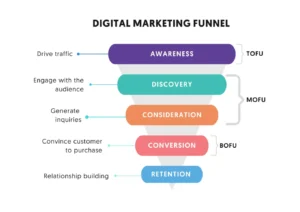
Image credit: reliablesoft
This is the first stage, where people are just becoming aware of your business. They might be facing a problem or have a need, but they don’t know yet that you have the solution. Your goal here is to get your brand in front of as many eyes as possible and make a good first impression.
How to do it:
At this stage, your audience isn’t ready to buy yet—they’re just learning who you are. Your goal is to provide value and catch their attention.

Now that potential customers are aware of your business, they start considering their options. This is where you build trust and show them why you're the best choice to solve their problem or fulfill their need. They might be comparing you to competitors or looking for more information.
How to do it:
This is also a good time to nurture your leads with email marketing campaigns, offering them more value and gently guiding them toward making a decision.
At this point, your leads are ready to make a decision. They’ve learned about your brand, compared their options, and now they’re on the verge of converting into paying customers. This is the most crucial part of the funnel, so your job here is to give them the final nudge.
How to do it:
Your goal here is to make the buying decision as easy as possible and eliminate any doubts they might have.

Congratulations! Your lead has now become a customer. But your job isn’t done yet—this is where the magic of turning a one-time buyer into a loyal customer comes into play. You’ve guided them through the funnel, and now it’s time to deliver a great experience and ensure they’re satisfied with their purchase.
How to do it:
By delivering an exceptional experience after the sale, you increase the chances of your customer returning and recommending your business to others.

Many businesses focus on getting new customers, but don’t forget about the ones you already have! Keeping your customers engaged and coming back for more is a key part of any successful digital marketing funnel. Plus, repeat customers are often more valuable and cheaper to retain than acquiring new ones.
How to do it:
Retention not only leads to more sales but also builds long-term loyalty and can even turn your customers into brand ambassadors.

These days, customers have more options than ever, and they don’t just stumble onto a purchase. They go through a journey—learning about their options, weighing pros and cons, and deciding who to trust. A digital marketing funnel helps you meet your potential customers where they are and gently guide them through each step of the buying process.
By creating a strong funnel, you’re not only increasing your chances of making a sale but also building lasting relationships with your audience. Whether you’re a small business or a growing brand, a well-structured digital marketing funnel is essential to turning visitors into leads and leads into loyal customers.
Our partners at Lucent Creative, a female-led digital marketing agency, help business owners like you set up marketing funnels that convert and boost revenue. Book a free consultation to get started!
If you're a small business owner, attracting local customers is key to growing your business, highlighting the importance of SEO. Whether you're running a café, a boutique, or a service provider, you want the people in your area to find you easily and choose you over the competition. That’s where local SEO (Search Engine Optimization) comes in.
Local SEO helps your business appear in online searches when people are looking for products or services nearby. Think of it as making sure your business pops up when someone searches for something “near me” on Google. Here’s why it’s super important for your business and how you can start using it to get noticed.

The main reason to focus on local SEO is to help your business show up higher in search results when people in your area are looking for what you offer. For example, when someone types in “best pizza near me” or “plumber in [your town],” you want your business to be at the top of the list.
If you aren’t optimizing your website or Google Business Profile, you're missing out on potential customers who are actively searching for services like yours. Local SEO helps you get noticed in these searches, which can land you a spot in the Google Map Pack—that highly visible map and business listing that shows up before any regular search results.
According to Google, 76% of people who search for something nearby on their phone visit a business within a day. That’s a huge opportunity! By optimizing for local SEO, you’re making it easier for people to find your business, see your hours, read your reviews, and get directions—all of which make it more likely they’ll visit you in person.
Local SEO literally puts your business on the map for customers ready to stop by and make a purchase.

Showing up consistently in local search results does more than increase visibility—it builds trust. When potential customers see your business listed at the top of their search, along with solid reviews, it signals that you’re a credible and trusted option in the area.
Encouraging happy customers to leave positive reviews is a great way to boost your online reputation with the local community. Over time, this can help you stand out as the go-to business in your area.
We know it can feel tough to compete with larger businesses with bigger marketing budgets, but local SEO gives small businesses an edge. While national companies might dominate broad searches, local SEO helps you shine when it comes to location-specific searches.
For example, while you might not beat a big-box store for “buy tools online,” with the right local SEO strategy, your hardware store can easily rank at the top for “hardware store in [your town].” Local SEO helps you go toe-to-toe with bigger brands, especially when it comes to your specific area.

Now that you know how important local SEO is, let’s talk about how to implement it. Here are some simple steps to help your business get found by local customers:
This is the big one! Make sure you claim your Google Business Profile and fill it out completely. Add all the relevant details, like your business name, address, phone number, website, hours, and services. Make sure everything is accurate and consistent across the web.
Positive reviews can give your local SEO a serious boost. Encourage your happy customers to leave glowing reviews on Google, Yelp, and other platforms. The more high-quality reviews you have, the better you’ll rank.

Incorporate location-specific keywords into your website’s content. For example, instead of just saying “best bakery,” try “best bakery in [your town]” to help Google understand where you’re located and match you with nearby searches.
Many local searches happen on phones, so your website needs to work well on mobile. Make sure it loads quickly, is easy to navigate, and has all your key info (like contact details and hours) right up front.

Try adding a blog or news section to your website that focuses on local events, collaborations, or other community-related topics. This will help you rank better in local searches and build a stronger connection with your audience.
Local SEO is a game changer for small businesses. It helps you get noticed by nearby customers, build trust in your community, and even compete with bigger brands. If you haven’t started working on your local SEO yet, now’s the time! With a little effort, you can attract more customers, drive more foot traffic, and grow your business right in your own neighborhood.
We offer SEO services in collaboration with our partners at Lucent Creative, a female-led digital marketing agency. Need a hand getting your business on the (local) map? Book a free consultation.
Managing a team can be complex, especially when juggling everything from payroll to performance reviews. That’s where Zoho People Plus comes in. It’s an all-in-one HR management platform designed to make your life easier by bringing together all the tools you need to manage your workforce efficiently. Whether you’re running a small business or a large company, Zoho People Plus helps you keep everything organized and running smoothly.

Zoho People Plus is a comprehensive HR management system that combines everything you need in one place. It’s part of the broader Zoho suite, known for its user-friendly design and powerful features. You can handle everything from hiring and onboarding to payroll and employee engagement, all from a single platform.
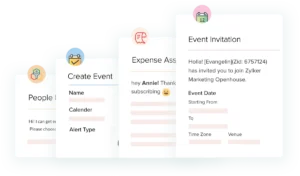
Keeping track of employee details is a breeze. You can store all your employee information in one organized database, making it easy to find what you need, when you need it. Plus, you can customize the fields to fit your company’s specific needs.
Say goodbye to manual time tracking. It offers automated time tracking and attendance management, integrating with biometric devices and mobile apps to ensure accuracy. Whether your team is in the office or working remotely, you’ll always have a clear picture of who’s working when.

Payroll can be a headache, but Zoho People Plus makes it simple. The platform automates salary calculations, tax deductions, and other payroll tasks, helping you avoid errors and stay compliant with local regulations. And with direct deposit support, payday is easier for everyone.
Hiring the right people is crucial, and this platform makes it easier than ever. Manage job postings, track applicants, and evaluate candidates all within the platform. Once you’ve made a hire, it streamlines the onboarding process, helping new employees get up to speed quickly.
Keeping track of employee performance is key to helping your team grow. Zoho People Plus offers tools for setting goals, giving feedback, and conducting performance reviews. With a clear performance management system, you can ensure that everyone is aligned and working toward the same objectives.
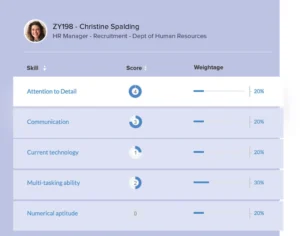
Zoho People Plus includes a self-service portal where employees can handle their own HR tasks, like updating personal info, requesting time off, and viewing payslips. This not only saves time for your HR team but also gives employees more control over their own work life.
Continuous learning is essential for keeping your team engaged and up-to-date. Zoho People Plus includes a learning management system (LMS) that allows you to create and manage training programs, track progress, and assess outcomes, ensuring your team is always learning and growing.
A happy, engaged team is a productive team. Zoho People Plus offers tools to run surveys, manage recognition programs, and foster better communication and collaboration within your team. These features help create a positive work environment where employees feel valued and motivated.
Zoho People Plus stands out because it’s flexible, scalable, and easy to use. It’s designed to adapt to your company’s unique needs, whether you’re managing a small team or a large, distributed workforce. And since it’s part of the Zoho suite, it integrates seamlessly with other Zoho apps, making it a powerful tool for building a cohesive business ecosystem.
Plus, because it’s cloud-based, Zoho People Plus keeps your HR data secure and accessible from anywhere. The mobile app also lets managers and employees handle HR tasks on the go, providing the flexibility that modern businesses need.

Zoho People Plus is more than just an HR tool—it’s a complete solution for managing every aspect of your employee lifecycle. By automating routine tasks, improving engagement, and providing valuable insights, Zoho People Plus allows you to focus on what really matters: helping your team succeed.
Whether you’re looking to streamline your HR processes, boost employee satisfaction, or support your team’s growth, Zoho People Plus has you covered.
See other ways Zoho can boost your HR Department:
If you want to take your HR game to the next level, let us introduce you to Zoho People—a total game-changer in human resources. But what exactly is Zoho People, and why should you care? Buckle up because we’re about to give you the lowdown on this amazing HR software that’s designed to make your life a whole lot easier.

Zoho People is part of the incredible Zoho suite of business apps, and it’s all about making HR management a breeze. Whether you're running a small business or managing a massive team, Zoho People has everything you need to manage your workforce efficiently and effectively. From employee data management to performance reviews, it’s got you covered.

First things first, Zoho People lets you manage all your employee information in one place—no more digging through piles of paperwork or endless spreadsheets. With Zoho People, you can easily store, update, and access employee records with just a few clicks.
Keeping track of who’s in and who’s out has never been easier. Zoho People’s time and attendance tracking feature lets employees clock in and out, request time off, and track their hours effortlessly. Plus, you get real-time reports, so you always know what’s going on.
Say goodbye to leave management headaches! Zoho People makes it super simple for employees to apply for leave and for managers to approve or reject requests. The best part? It automatically updates leave balances, so everyone’s always in the loop.
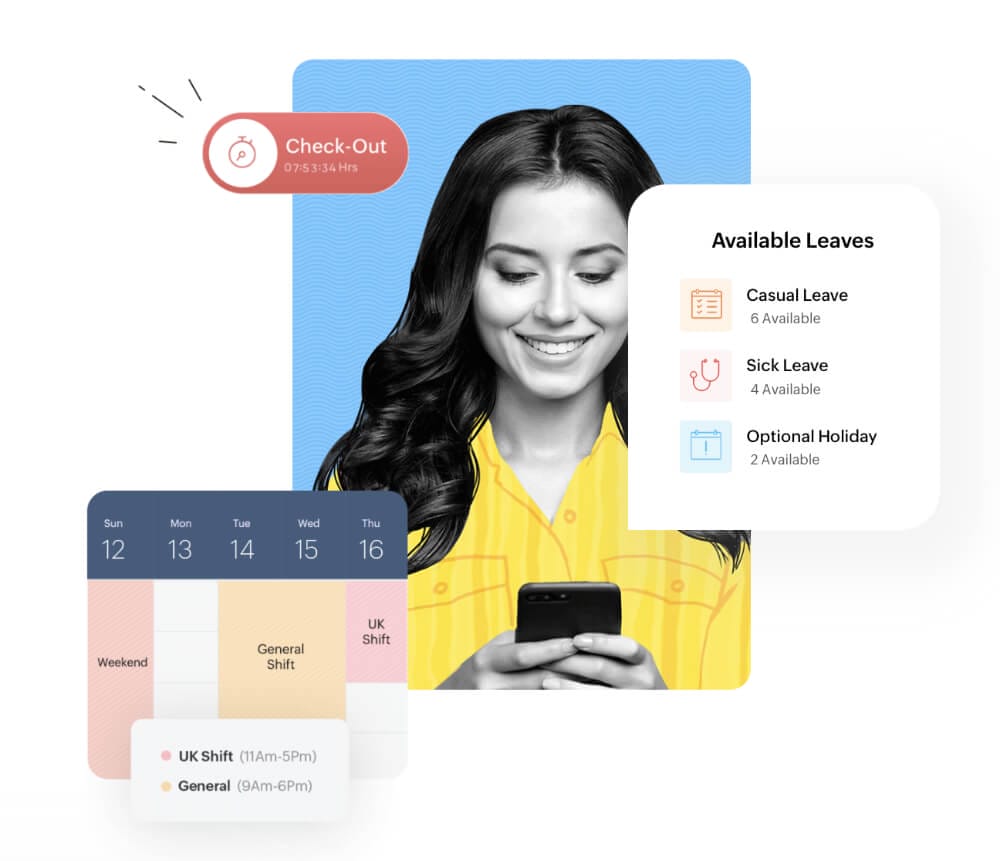
Get ready to make performance reviews a breeze. With Zoho People, you can set goals, provide feedback, and conduct appraisals all in one place. The system is designed to help you keep track of employee performance and ensure everyone’s working towards the same objectives.

Every business is unique, and Zoho People gets that. You can create customizable workflows to automate routine HR tasks. Whether onboarding new hires or managing exit processes, Zoho People ensures everything runs smoothly.
Empower your employees with Zoho People’s self-service portal. They can update their personal information, view payslips, request time off, and more—all without having to bug HR.
Want to make data-driven decisions? Zoho People offers robust reporting and analytics tools that give you insights into your workforce. Track key metrics like employee turnover, attendance rates, and performance trends to keep your HR strategy on point.
Zoho People simplifies and automates your HR processes, saving you time and reducing the hassle. This means you can focus on what really matters—your people.
With easy-to-use features and a sleek interface, Zoho People ensures a positive experience for your employees. Happy employees mean a happier workplace!

Zoho People boosts productivity for both HR teams and employees by automating routine tasks and providing powerful tools. It’s a win-win!
Whether you're a small business or a large enterprise, Zoho People scales with your needs. Customize it to fit your unique requirements and watch your business thrive.

Zoho People is the ultimate HR software that brings simplicity, efficiency, and fun to managing your workforce. From effortless employee management to powerful performance reviews, Zoho People has everything you need to create a stellar HR experience. Ready to take your HR game to the next level? Zoho People is your perfect partner!
Book a free consultation with our team to find the right solutions for your business.
In today's fast-paced job market, having the right recruitment tools can make all the difference. Enter Zoho Recruit—a game-changer in the world of hiring. But what exactly is Zoho Recruit, and how can it supercharge your recruitment process? Let’s dive in and find out!

Zoho Recruit is part of the awesome Zoho suite of business apps. It's a powerful recruitment software designed to simplify and enhance your hiring process. Whether you're a staffing agency, a corporate HR team, or a small business, Zoho Recruit has got your back with all the tools you need to find, engage, and hire top talent.
At the heart of Zoho Recruit is its super-efficient Applicant Tracking System (ATS). This nifty feature lets you manage the entire hiring process in one place—from posting job openings to onboarding new hires. The ATS keeps everything organized, making it a breeze to track candidates, schedule interviews, and collaborate with your team.
Zoho Recruit lets you create a snazzy, branded career portal for your company. Candidates can easily browse and apply for jobs, giving them a smooth and enjoyable experience while boosting your job postings' visibility.
Say goodbye to manual data entry! Zoho Recruit’s resume parsing feature automatically extracts key info from resumes and fills out candidate profiles for you. This means less time on tedious tasks and more time finding the perfect fit.
Staying in touch with candidates is a breeze with Zoho Recruit. It integrates with your favorite email clients and offers SMS capabilities, so you can send automated emails and texts to candidates throughout the hiring process.

Zoho Recruit's workflow automation feature takes the hassle out of repetitive tasks. From sending follow-up emails to updating candidate statuses and scheduling interviews, automation frees up your time to focus on what really matters—finding great talent.
Get the insights you need with Zoho Recruit’s robust analytics and reporting tools. Track key metrics like time-to-hire, source of hire, and candidate pipeline to make data-driven decisions and optimize your recruitment strategy.
Zoho Recruit plays well with others! It seamlessly integrates with other Zoho products like Zoho CRM, Zoho People, and Zoho Mail. Plus, it supports integrations with popular third-party apps like LinkedIn, Google Workspace, and Slack, ensuring you can connect all your favorite tools.

Zoho Recruit simplifies and automates the entire recruitment process. This means you save time, reduce admin work, and can focus on what’s most important—finding the best candidates.
With a customizable career portal, automated communication, and a user-friendly interface, Zoho Recruit provides a top-notch experience for candidates. Happy candidates mean better talent for your team!

Zoho Recruit’s analytics and reporting tools give you valuable insights into your hiring process. Use this data to improve your strategy, make informed decisions, and get the best results.
No matter the size of your business, Zoho Recruit offers the flexibility and scalability to fit your needs. Customize the features and integrations to match your specific requirements and watch your business grow.
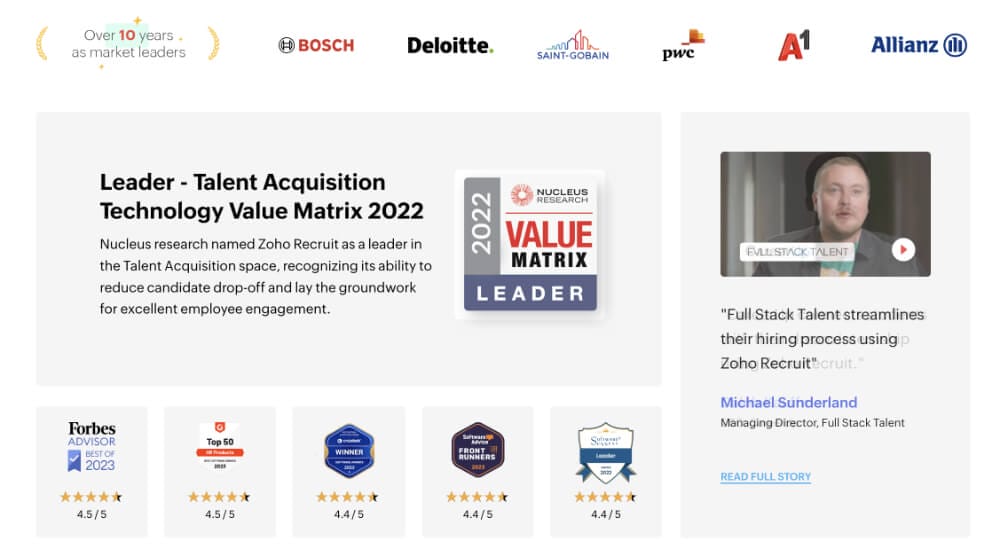
Zoho Recruit is a powerhouse recruitment software that offers everything you need to streamline your hiring process. With its robust ATS, customizable career portal, automation capabilities, and data-driven insights, Zoho Recruit is here to help you attract, engage, and hire the best talent. Ready to take your recruitment game to the next level? Zoho Recruit is your new best friend!
Chat with our team about the best solutions for your business. Book a free consultation!
Having a customer relationship management (CRM) system that adapts to your unique needs is a game-changer.
Enter Zoho Canvas, a revolutionary feature within the Zoho CRM ecosystem that empowers users to design and customize their CRM interface to reflect their business's specific workflows and aesthetic preferences. This blog post will delve into what Zoho Canvas is, its benefits, and how it can transform your CRM experience.

Zoho Canvas is a drag-and-drop interface design tool that allows users to create custom views for their CRM data. Unlike traditional CRM interfaces that can feel rigid and one-size-fits-all, Zoho Canvas offers a high degree of flexibility, enabling businesses to tailor the look and feel of their CRM to better align with their processes and branding.
With Zoho Canvas, you are not just limited to the standard layouts provided by your CRM. You can design a user interface (UI) that suits your specific needs, whether that means creating a minimalist view for quick data entry or a detailed layout that provides comprehensive customer insights at a glance.
Drag-and-Drop Interface: The intuitive drag-and-drop functionality of Zoho Canvas makes it accessible to users of all technical backgrounds. You don’t need to know how to code to create a beautiful and functional interface.
Custom Views: Create custom views that cater to different departments within your organization. For instance, your sales team might need a detailed view of client interactions, while your support team might benefit from a streamlined ticket management layout.
Rich Text Formatting: Enhance your data presentation with rich text formatting options. This feature allows you to use various fonts, colors, and styles to highlight important information and improve readability.
Custom Components: Add custom components such as images, buttons, and widgets to your CRM interface. These elements can help you create a more engaging and user-friendly experience.
Conditional Formatting: Use conditional formatting to automatically change the appearance of data fields based on specific criteria. This can help you quickly identify important information, such as overdue tasks or high-value leads.
Reusable Templates: Save time by creating reusable templates for common layouts. These templates can be applied across different modules, ensuring a consistent look and feel throughout your CRM.

Enhanced Usability: By customizing your CRM interface, you can create a more intuitive and user-friendly experience. This can lead to increased adoption rates among your team and improved overall efficiency.
Improved Data Visualization: Zoho Canvas allows you to present your data in a way that makes sense for your business. Custom views and conditional formatting help ensure that important information is easily accessible and visually appealing.
Tailored Workflow: Different teams within your organization have different needs. Zoho Canvas enables you to create interfaces that align with each team’s specific workflows, improving productivity and reducing friction.
Brand Consistency: A customized CRM interface can help reinforce your brand identity. By incorporating your company’s colors, logos, and design elements, you can create a cohesive experience that aligns with your overall branding strategy.
Scalability: As your business grows and evolves, so too can your CRM interface. Zoho Canvas makes it easy to adjust and expand your layouts to accommodate new processes, teams, and data sources.
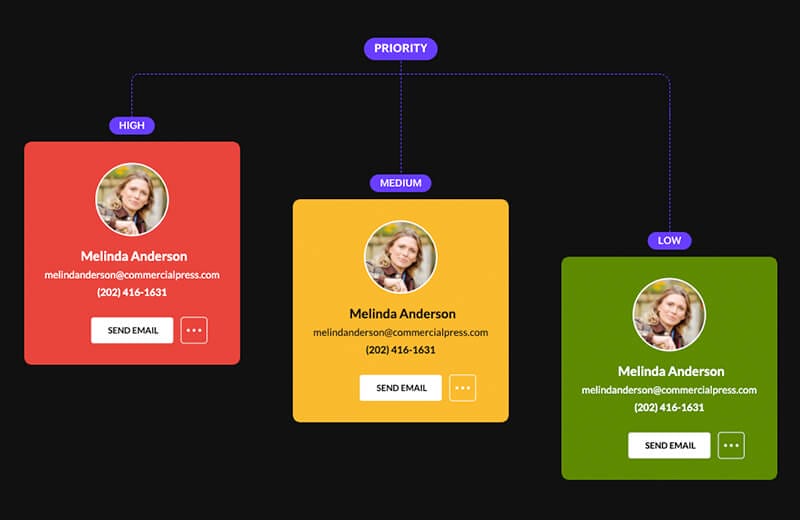
1. Accessing Zoho Canvas: To begin using Zoho Canvas, log in to your Zoho CRM account. Navigate to the module you want to customize and select the “Canvas” option from the view settings.
2. Designing Your Layout: Use the drag-and-drop editor to design your custom layout. Add fields, components, and formatting as needed to create a view that suits your business requirements.
3. Preview and Publish: Once you’re satisfied with your design, preview it to ensure everything looks and functions as expected. Make any necessary adjustments, then publish your layout for your team to use.
4. Training and Adoption: Introduce your team to the new interface and provide training to help them get the most out of the customized views. Encourage feedback and be prepared to make further tweaks based on their input.
5. Ongoing Optimization: Regularly review and update your CRM layouts to ensure they continue to meet your business needs. Zoho Canvas makes it easy to iterate and improve your designs over time.
Imagine a sales team that needs quick access to lead information while on the go. With Zoho Canvas, you can create a mobile-friendly view that prioritizes key data fields and includes action buttons for common tasks like calling or emailing leads. Alternatively, a customer support team might benefit from a detailed ticket view that includes customer history, priority levels, and resolution times, all designed to streamline the support process.

Zoho Canvas is a powerful tool that transforms how businesses interact with their CRM data. By offering customization options, it enables organizations to create interfaces that enhance usability, improve data visualization, and align with unique workflows. Whether you’re looking to increase team efficiency, maintain brand consistency, or scale your operations, Zoho Canvas provides the flexibility and functionality you need to take your CRM to the next level.
Do you need a hand with implementation? Chat with our team about the best solutions for your business.